Classic 4th of July Food Through the Ages: How America’s Independence Day Cuisine Evolved
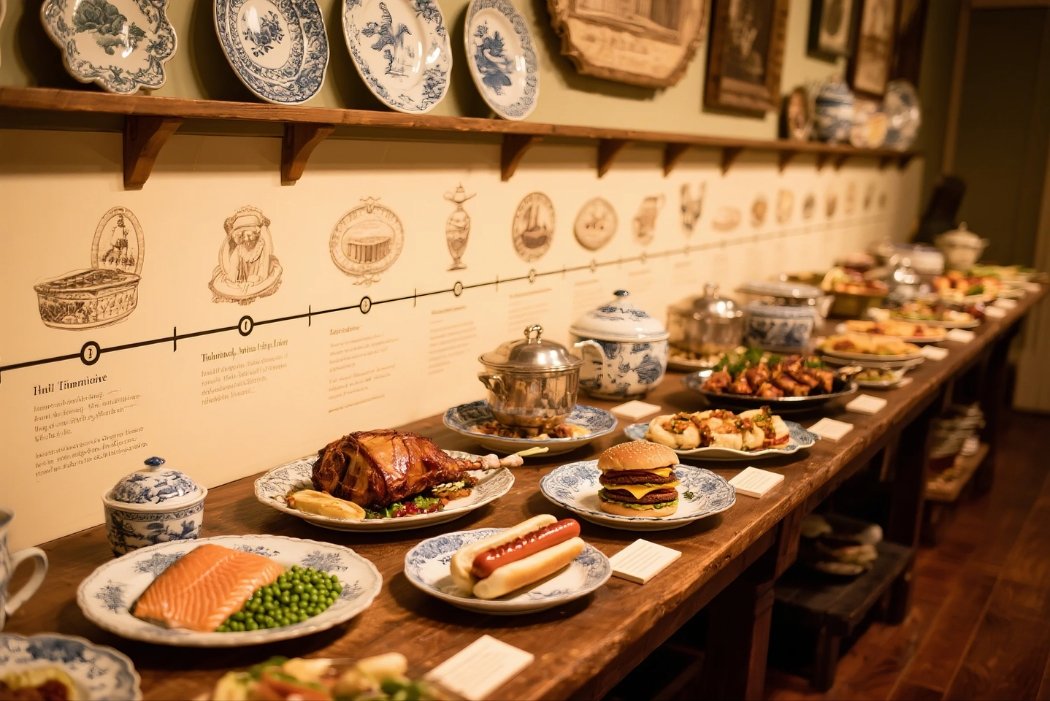
The Fourth of July in the United States is a holiday steeped in tradition, and at the heart of its celebrations lies a rich and diverse culinary landscape. Food is not merely sustenance on this day; it serves as a central element for gatherings, a vibrant expression of national pride, and a delicious link to the nation’s history.
The menus of Independence Day often weave together time-honored favorites, regional specialties that highlight the country’s vast culinary tapestry, and festive creations that amplify the joyous atmosphere of the holiday. These classic 4th of July food traditions frequently evoke powerful feelings of nostalgia, connecting generations through shared experiences, and fostering a sense of unity around the celebration of American independence.
Let’s explore the iconic dishes that have become central to our Independence Day celebrations and discover how you can create your own memorable traditions this year.
Contents
Grilling: The Heart of the Celebration
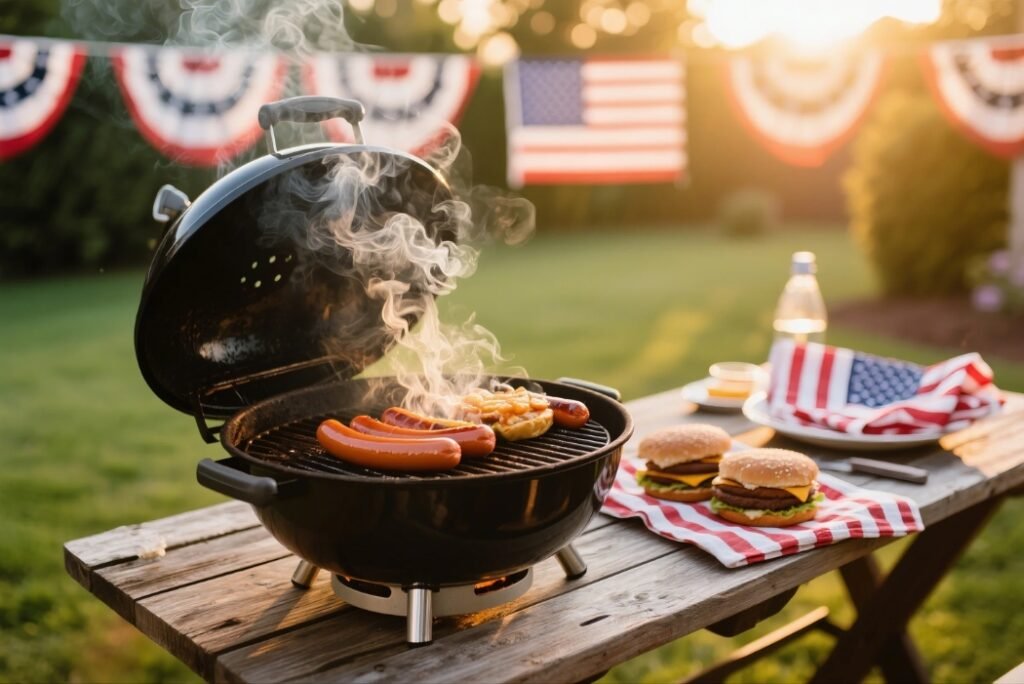
At the forefront of any Fourth of July celebration is the unmistakable aroma of the grill. Outdoor cooking has become deeply ingrained in the holiday tradition, with the sizzle of barbecued fare providing the soundtrack to countless gatherings across the country.
Hot dogs, despite their European origins, have firmly established themselves as a symbol of American summer and the 4th of July. The concept of placing sausages in buns arrived in the United States with European immigrants, but it was the Polish immigrant Nathan Handwerker who truly popularized them with his famous stand in Coney Island.
Today, the annual Nathan’s Hot Dog Eating Contest stands as a testament to this food’s unique place in American culture. Whether grilled to achieve a smoky char or simply boiled for ease, hot dogs serve as a versatile canvas for a wide array of quintessential American toppings, catering to the individual tastes of every cookout attendee. This journey from an immigrant snack to an classic 4th of July food icon underscores the nation’s history as a melting pot of cultures and cuisines.
Similar to hot dogs, hamburgers have also transcended their European roots to become a cornerstone of American cuisine. While early versions accompanied European settlers, the hamburger as we know it—a ground beef patty served in a bun—gained prominence in the early to mid-20th century with the flourishing of fast-food chains after World War II.
The hamburger’s versatility is a key to its enduring appeal as a classic 4th of July food, allowing for endless customization with a variety of toppings and builds, from traditional lettuce and tomato to more gourmet additions. The rise of the hamburger mirrors the development of American fast-food culture, reflecting a demand for convenient and affordable meals that can still be personalized.

For those serious about creating the perfect classic 4th of July food experience, having quality equipment makes all the difference. Monument Grills, established in 2016 in Atlanta, offers impressive options for outdoor cooking enthusiasts. Their range includes everything from compact two-burner models perfect for smaller gatherings to expansive six-burner setups ideal for neighborhood celebrations.
What sets Monument Grills apart are thoughtful features like LED-lit control knobs for evening grilling and ClearView window lids that let you monitor your burgers and hot dogs without releasing precious heat. The durable stainless steel construction and even heat distribution ensure your Independence Day favorites cook perfectly every time.
Before your next patriotic celebration, consider exploring Monument Grills’ website for options that match your entertaining style and space. Use these Monument Grills coupons to secure the best prices on these American-designed grills that are built to handle everything from juicy hamburgers to perfectly charred hot dogs. A quality grill is an investment in many summers of memorable gatherings centered around beloved classic 4th of July food traditions.
Barbecue Traditions
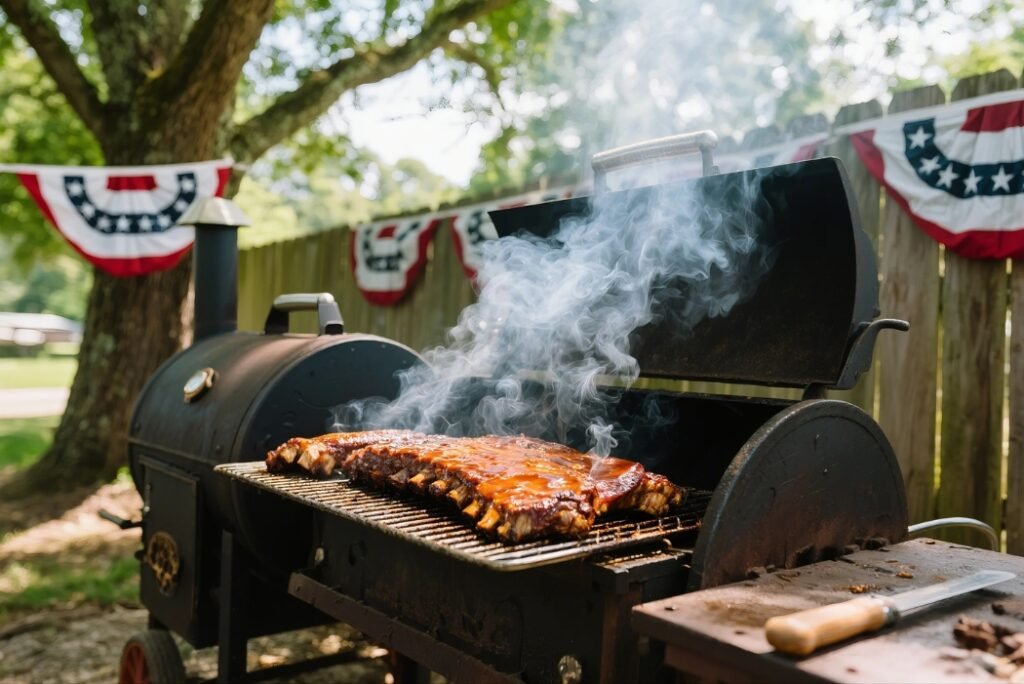
No Fourth of July celebration would be complete without a barbecue, a proud American pastime that embodies the spirit of cooking for large gatherings outdoors. This tradition is deeply rooted in American history, evolving from early communal feasts and political rallies in the 19th century to the backyard family events we know today.
Barbecue on Independence Day represents a time-honored method of preparing large quantities of food, fostering social connections and a sense of community. The aromas of popular barbecue meats such as ribs, brisket, burgers, and pulled pork fill the air, creating an atmosphere of festive indulgence that has become synonymous with classic 4th of July food.
Picnic Favorites
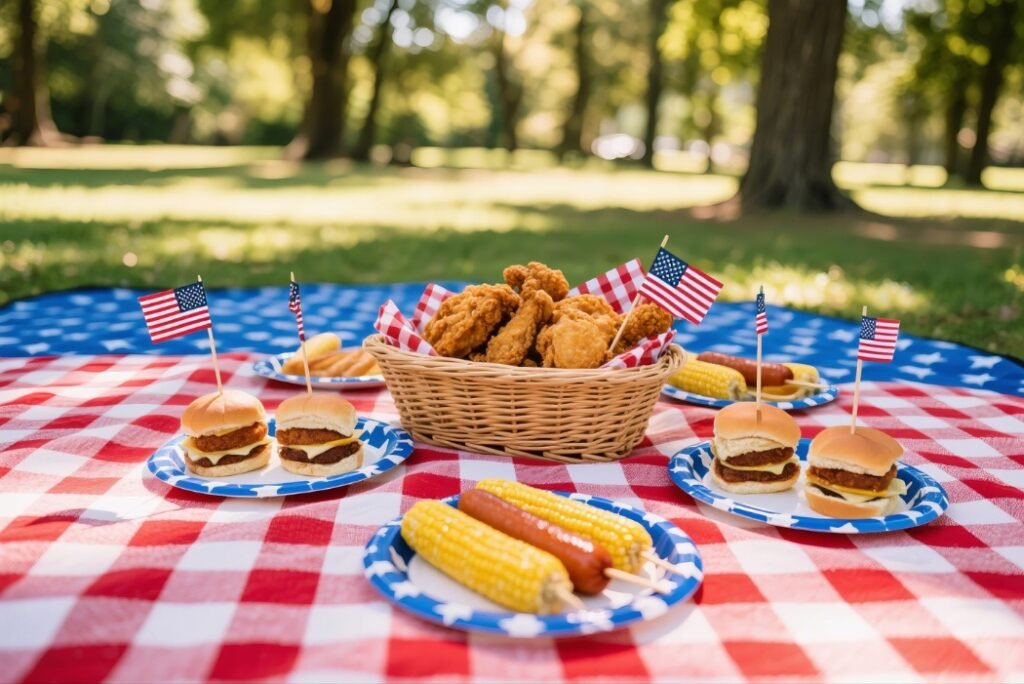
Beyond the grill, picnic favorites also play a significant role in the 4th of July culinary landscape, emphasizing foods that are easily transportable and enjoyable in an outdoor setting. Fried chicken, whether crispy and golden or enjoyed cold, remains a classic choice for many Independence Day picnics.
Pulled pork, often prepared in a slow cooker for maximum tenderness and ease of serving, is another popular option for feeding a crowd. Other portable main dishes include corn dogs, offering a fun, handheld option reminiscent of state fairs, and sliders, bite-sized versions of burgers or other sandwiches that are easy to manage while enjoying outdoor festivities.
Side Dish Sensations

Completing the classic 4th of July food lineup are a variety of side dish sensations, with cold salads taking center stage for their refreshing qualities and make-ahead convenience.
Potato salad, in its numerous forms, is an indispensable part of the holiday menu, ranging from classic mayonnaise-based recipes featuring red-skinned potatoes to regional variations like German potato salad with its tangy vinegar dressing and bacon.
Macaroni salad, often prepared with ham or an assortment of fresh vegetables, is another quintessential picnic side, offering a creamy and satisfying complement to grilled fare. Coleslaw, whether the rich, creamy mayonnaise-based version or the lighter, tangier vinegar-based slaw, is a classic partner for barbecue, providing a welcome crunch and flavor contrast.
Other popular cold salads frequently found at Independence Day gatherings include broccoli salad, three-bean salad, and various pasta salads, offering a diverse array of textures and flavors that have become classic 4th of July food favorites. The European origins of potato salad and coleslaw, brought to America by immigrants and adapted over time, highlight the significant role of cultural exchange in shaping American culinary traditions.
Grilled vegetables offer a healthy and flavorful counterpoint to the often meat-heavy main dishes. Corn on the cob, a true highlight of summer, is practically mandatory at any Independence Day cookout. Often grilled in the husk to retain moisture and flavor, it’s typically served simply with butter and salt, though various creative toppings can elevate this summer staple.
Baked beans, a sweet and savory barbecue side often enriched with bacon and molasses, round out the classic 4th of July food offerings. Their comforting and familiar flavor makes them a beloved accompaniment to grilled meats.
Regional Barbecue Styles

The culinary landscape of the Fourth of July is further enriched by the diverse regional barbecue styles found across the United States. Each region boasts its own unique traditions, reflecting local ingredients, preferences, and historical influences.
In North Carolina, barbecue is synonymous with pork, prepared with distinct vinegar-based sauces that vary between the eastern (whole hog) and western (pork shoulder with ketchup-based sauce) parts of the state.
In Texas, beef, particularly brisket, reigns supreme as a classic 4th of July food, often seasoned with a simple salt and pepper rub to highlight the quality of the meat, with sauce playing a supporting role.
Kansas City barbecue is known for its wide variety of meats, including pork, beef, and even lamb, all typically slathered in a sweet and thick tomato-molasses-based sauce.
Memphis-style barbecue centers around pork ribs, which can be prepared either “dry” with a flavorful rub or “wet” with a tangy sauce, while in Alabama, a distinctive white barbecue sauce, made with mayonnaise, vinegar, and pepper, is a regional favorite, often served with smoked chicken.
Sweet Endings

No Fourth of July celebration is complete without an array of sweet treats, often reflecting the patriotic spirit of the holiday. Desserts incorporating the colors of the American flag are always a hit, with the flag cake, adorned with strawberries and blueberries, being a classic example.
Berry trifles, with their layers of cake, custard, and vibrant red and blue berries, offer another visually appealing and delicious option. Even frozen treats get a patriotic makeover with red, white, and blue popsicles providing a refreshing way to celebrate.
Apple pie, an enduring symbol of American cuisine, frequently graces holiday tables, often served warm with a scoop of vanilla ice cream. Blueberry pie and peach cobbler are other popular choices, capturing the essence of summer and completing the classic 4th of July food experience.
Refreshing Beverages

Quenching the thirst on a hot July day is just as important as the food. Lemonade, often homemade with its perfect balance of sweet and tart, is a timeless summer staple. Iced tea, particularly Southern-style sweet tea, is a beloved tradition in the South, offering a cool and sugary respite from the heat.
For adult celebrations, beer remains a staple at barbecues, while sangria, often featuring red, white, and blue fruits, adds a refreshing and patriotic touch to the classic 4th of July food experience. Other popular summer cocktails like margaritas, mojitos, and bourbon-based drinks, often incorporating seasonal fruits, round out the beverage offerings.
A Culinary Evolution
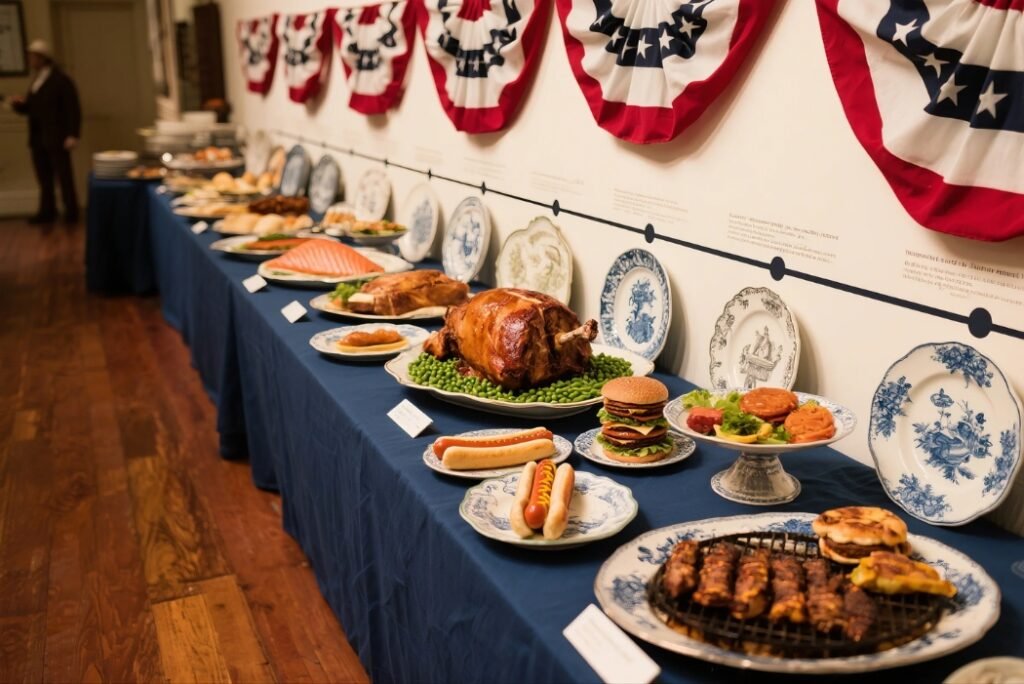
The foods we associate with the Fourth of July today have evolved considerably since the nation’s founding. Early celebrations featured more formal meals, with dishes like turtle soup, poached salmon with egg sauce, green peas, and boiled new potatoes often gracing the tables of the more affluent.
The 19th century witnessed a growing trend towards outdoor barbecues, often linked to political rallies and community gatherings, with the roasting of whole animals becoming a common practice. The late 19th and 20th centuries saw the rise of iconic American foods like hot dogs and hamburgers, their popularity fueled by immigration and the burgeoning food industry.
In conclusion, the classic 4th of July food traditions are more than just a collection of dishes; they represent a vibrant tapestry of American culinary history, cultural influences, and cherished traditions. They embody not only the nation’s culinary heritage but also the enduring spirit of independence and togetherness that defines this cherished holiday. As families and friends gather each year, these foods serve as a delicious and comforting reminder of shared values and the joy of celebrating freedom and community.





